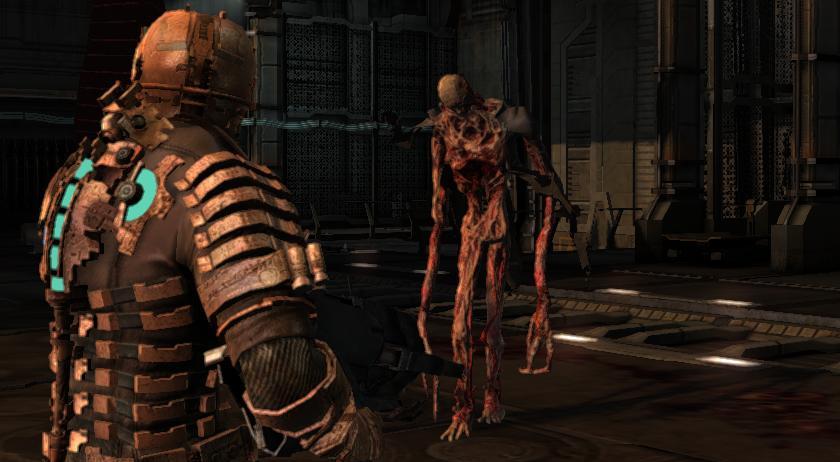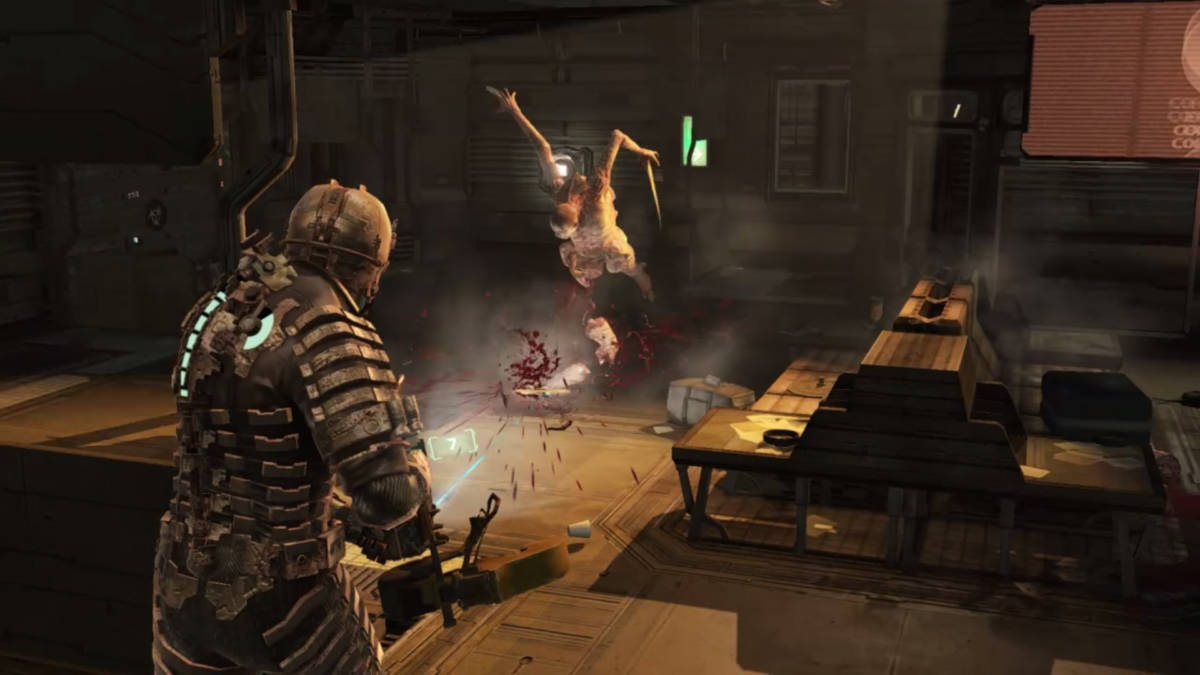Memorable Mechanics is a bi-weekly column highlighting memorable gameplay mechanics and level design of both past and present video games. This week I take a look back at the sickeningly satisfying limb dismemberment gameplay of the Dead Space series. Enjoy.
The first two Dead Space games hold a special place in my heart for their visceral (ED: ha) and pulse-pounding survival horror gameplay. To this day, many developers fail to replicate the sense of dread, urgency, claustrophobia and sheer carnage that was crucial to developer Visceral Games’ Dead Space experience. The pacing of the Dead Space games became more action oriented with Dead Space 2, though it still retained the aesthetics and horror precedent set by the original, something that Dead Space 3 would completely ignore.
For the unfamiliar, Dead Space’s story revolves around engineer Isaac Clarke’s discovery of extra-terrestrially-infection known as Necromorphs. Necromorphs inhabit the bodies of their victims and turn them into walking nightmares reminiscent of the horrific creatures in John Carpenter’s The Thing. Players quickly learn that Necromorphs cannot be killed by conventional means, and must be put down for good with surgical precision to sever their limbs.

This emphasis on dismemberment sounds like a rather simplistic gameplay mechanic when in actuality it represents and influences every aspect of the game’s survival horror elements. This focus on dismemberment turns Necromorphs from standard fodder into formidable opponents that require the player to approach every encounter strategically. Their attack patterns can be unpredictable given the variations and number of Necromorphs that Isaac can face at once. Necromorph patterns shift from slowly stalking Isaac to full-on sprinting which can quickly turn encounters from manageable to terrifyingly chaotic.
Due to the sporadic movements and lethality of Necromorphs, precision aiming is paramount to the player’s survival. Choices about whether to sever a Necromorph’s clawed arm to deprive them of a weapon, or take out a leg to limiting their mobility, gives the player a modicum of control in prioritizing threats. Given the frequent likelihood of death when played on the higher difficulty settings, there were many moments where I panicked and ended up wasting ammo on chest shots that ultimately resulted in my death. Dead Space’s emphasis on precision adds unparalleled tension to engagements that made every enemy encounter memorable.

While firearms are the primary means with which to dismember Necromorphs, Isaac has several abilities that aid in making dismemberment a tad more manageable. At his disposal are a kinesis module – a gravity beam that can manipulate objects in the environment and a stasis module -a projectile that momentarily slows the enemy’s movement. While the primary use of both of these modules is to solve environmental puzzles, Isaac can employ both as offensive and defensive tactics. I frequently used kinesis to rip the limbs off corpses and used them as lethal projectiles. Repurposing limbs not only helped with ammo conservation but was sinisterly satisfying.
As for stasis, no tool was more critical to managing multiple attackers at once. Using stasis to immobilize an enemy, crippling another, and then blasting the limbs off the immobilized enemy before stasis wore off was a combo I utilized frequently. These modules are further proof of mechanics that speak to the core of the Dead Space experience in that all facets of its gameplay, no matter their primary use, can be applied to the game’s dismemberment system.
This dismemberment mechanics wouldn’t be nearly as remarkable had Visceral Games not spent ample time crafting the claustrophobic environments of Dead Space and Dead Space 2. Environments are dark and dripping with the story of how man’s greed will ultimately lead to his destruction. Mutilated corpses coat the floors; faint whispers and footsteps that belong to no one are frequently heard. Dead Space’s atmosphere preys on the player’s nerves, and this is amplified by the necessity to carefully dismember Necromorphs limb by limb.

While my love for Dead Space and Dead Space 2 knows no limits, it ends there. It is with great restraint that I will avoid going on a tangent about what made Dead Space 3 so at odds with a franchise I had come to cherish. That being said, a quick example of the dismemberment mechanics not having as great an impact on the survival horror elements of Dead Space 3 is evident from its focus on larger environments. By opening up environments the sense of claustrophobia and urgency is lost, and thus so is the crucial timing to dismember enemies, as Isaac has more room to maneuver around them.
Considering how disappointed I was with Dead Space 3, I was still willing to give Visceral Games the benefit of the doubt should they announce a Dead Space 4. Unfortunately, the chance of future Dead Space games has all but evaporated due to the developer’s unfortunate closure earlier this year.
And yet, even if the series ends on a rather low note, Dead Space 3’s predecessors will always remain timeless for me due to the memorable mechanics of dismemberment that separated it from other survival horror titles.
Do you have fond memories of The Dead Space franchise? How does it rank amongst your favorite survival horror franchises? Let us know your thoughts in the comments.
READ MORE:
– The 50 Best Games of 2017
Some of the coverage you find on Cultured Vultures contains affiliate links, which provide us with small commissions based on purchases made from visiting our site.

